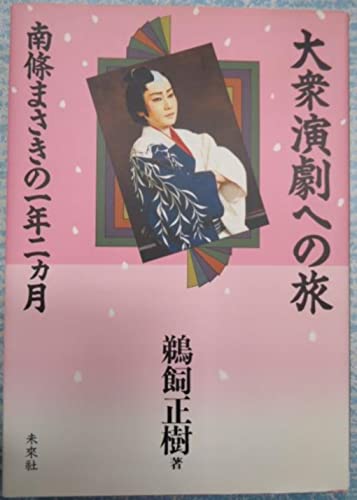3 0 0 0 OA 大衆劇団における人間関係
- 著者
- 鵜飼 正樹
- 出版者
- 社会学研究会
- 雑誌
- ソシオロジ (ISSN:05841380)
- 巻号頁・発行日
- vol.30, no.1, pp.95-124,191, 1985-05-31 (Released:2017-02-15)
This paper is based on participant-observation of a travelling theater troupe (taishu gekidan), the Ichikawa H. Gekidan. This kind of troupe has its orign in Kabuki, Shinpa, and Kengeki, and the elements from each of these traditions are mixed. An actor may be known by any one of three different kinds of names : his real name, his stage name, and the name of the character he is portraying. The Ichikawa H. Gekidan can thus be analyzed at each of these levels. At the level of the real name, family relationships are recognized. There are two families in the troupe, in addition to individual members. Each actor also has a stage name. The stage name reflects the teacher-pupil relationship, which is a psuede-familial one. Seniority and ability determine those who are called “older brother (nisan)” and “Older sister (nesan)”. Within each play, new relationships are formed that are different from these at the levels of real and stage names. Parts are divided into the “good guys (tachiyaku)” and the “bad guys (katakiyaku)” and the good never fail to defeat the bad. These three levels are distinguished according to time and place. For instance, the name of the character is used on stage, while the stage name is used backstage. However “Nisan-Nesan” relationships are preserved in every day life, which also functions to conceal family relationships from outsiders. Sometime family relationships come into conflict its stage-name relationships. Each actor has a reputation for virtuosity in certain type of roles (yakugara) such as lover (nimaime), “good guy (tachiyaku)” etc. Ideally an actor is cast in a role (haiyaku) that matches his strength (yakudokoro), but sometimes this cannot be achieved because of unavoidable factors such as limited personel.
- 著者
- ギリヤーク尼ヶ崎 鵜飼正樹
- 出版者
- 京都文教大学
- 雑誌
- 人間学研究 (ISSN:18843735)
- 巻号頁・発行日
- vol.10, pp.73-97, 2010-03-31
2 0 0 0 OA モラトリアム研究者の思い出 : 日野舜也さん座談(3)カメルーン
1 0 0 0 大衆演劇への旅 : 南條まさきの一年二ヵ月
1 0 0 0 会社文化の総合的研究
本年度は、昨年度に引き続き企業博物館や会社を個人ないし数名で訪問し、聞き取り調査をおこなった。地域別の主な訪問先は次のとおりである(詳細は報告書参照)。北海道:小樽オルゴール堂アンティークミュージアム、小樽ヴェネチア美術館、旧日本郵船株式会社小樽支店、小樽運河工芸館、雪印乳業史料館、サッポロビール博物館、竹鶴資料館、コニカプラザ・サッポロ、らいらっく、ぎゃらりい(北海道銀行)、石炭の歴史村、男山酒作り史料館、優佳良織工芸館、ふらのワイン工場、池田町ワイン城、馬の資料館、太平洋炭礦炭鉱展示館 関東:資生堂企業資料館、日本銀行貨幣博物館 中部:東海銀行資料館、窯のある広場・資料館(INAX)、日本モンキーセンター(名古屋鉄道) 諏訪北澤美術館、SUWAガラスの里 近畿:ホンダコレクションホール、パルケエスパーニャ、真珠博物館、竹中大工道具館、島津創業記念資料館 九州:西部ガス、ハウステンボス、べっ甲文化資料館このほか住原は原子力発電所PR館のうち昨年度の訪問先以外のすべてを調査するとともに、関電、北電、九電の本社でインタビューをおこない、PR館が原発のしくみや安全性を説明する施設から、リクリエーションや地元文化を紹介する文化観光施設に変わってきたことを明らかにし、記号論者の言う「詩的機能」が付与されヘゲモニ-形成に寄与していることを実証した。会社の求心性や遠心性については、日置が「組織ユニットにおける副の職務」に関して、企業の組織改革の中で自分の役割を主張する機会のないまま、整理対象となっている副の役割について研究をおこなった。会社の記念行事や宗教儀礼にみられるように、経営に宗教的要素が動員されることについては、ダスキンと日立製作所、伏見稲荷神社で調査を実施した。2年度にわたる調査研究の結果、会社文化の研究には「経営人類学」とでも称すべき研究分野が存在することがしだいに明確となり、企業博物館や宗教儀礼の分析を通して、会社の精神的の文化的・経営的側面こそが経済よりもむしろ歴史的に意味をもつ場面のあることを明らかにした。


